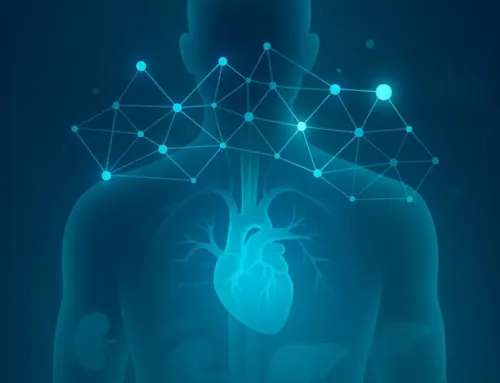
Approx. read time: 5.4 min.
Post: Your Paradigm is Your Blanket: The Interconnectedness of Mental and Physical Health
When looking at the Interconnectedness of Mental and Physical we often find ourselves juggling multiple responsibilities, from work and family to social commitments and personal interests. Amid this whirlwind, maintaining a balanced state of mental and physical health becomes crucial. An often-overlooked aspect of achieving this balance is the paradigm we live by – our core beliefs and perspectives that shape our reality. This paradigm acts as a blanket, providing comfort and support, influencing both our mental and physical well-being. Understanding this interconnectedness can empower us to create a healthier, more fulfilling life.
Understanding the Paradigm
A paradigm is essentially a framework of beliefs, values, and assumptions that influence how we perceive and interact with the world. It is shaped by our experiences, culture, education, and personal reflections. This mental framework guides our thoughts, behaviors, and reactions, often subconsciously. The significance of our paradigm extends beyond just a philosophical concept; it plays a pivotal role in determining our mental and physical health.
Mental Health and Paradigms
Our mental health is profoundly influenced by the paradigms we hold. A positive, growth-oriented paradigm can foster resilience, optimism, and emotional stability. Conversely, a negative, rigid paradigm can lead to stress, anxiety, and depression. Here are some ways paradigms affect mental health:
- Perception of Stress: Individuals with a positive paradigm view challenges as opportunities for growth, reducing the impact of stress. Those with a negative paradigm may see challenges as insurmountable obstacles, increasing stress and anxiety.
- Self-Efficacy: A strong belief in one’s abilities (a key aspect of a positive paradigm) can enhance mental health by promoting confidence and reducing feelings of helplessness.
- Emotional Regulation: Paradigms that emphasize mindfulness and emotional awareness help individuals manage their emotions better, leading to improved mental health.
Physical Health and Paradigms
The influence of paradigms extends to our physical health as well. Our beliefs and attitudes can affect our bodily functions, immune responses, and overall physical well-being. Here’s how:
- Stress Response: A positive paradigm can mitigate the physiological effects of stress, such as high blood pressure and a weakened immune system. Chronic stress, often a result of a negative paradigm, can lead to various health issues like heart disease and diabetes.
- Health Behaviors: Paradigms shape our attitudes towards health behaviors such as diet, exercise, and sleep. A positive paradigm encourages healthy habits, while a negative one might lead to neglect of these crucial activities.
- Pain Perception: Our beliefs about pain can influence how we experience it. A positive paradigm can reduce the perception of pain and improve recovery times.
Building a Healthier Paradigm-The Interconnectedness of Mental and Physical Health
Given the profound impact of paradigms on mental and physical health, cultivating a healthier paradigm becomes essential. Here are some strategies to help shift towards a more positive, supportive paradigm:
- Self-Reflection and Awareness:
- Regularly reflect on your thoughts, beliefs, and behaviors. Identify patterns that are detrimental to your well-being.
- Practice mindfulness to become more aware of your mental state and how it affects your physical health.
- Challenge Negative Beliefs:
- Question and reframe negative beliefs and assumptions. For instance, replace “I can’t handle this” with “I can find a way through this challenge.”
- Use cognitive-behavioral techniques to transform negative thought patterns.
- Cultivate Gratitude:
- Develop a gratitude practice by regularly acknowledging the positive aspects of your life. This can shift your focus from what’s wrong to what’s right, fostering a positive paradigm.
- Keep a gratitude journal to reinforce positive thinking.
- Engage in Positive Activities:
- Pursue activities that bring joy, relaxation, and fulfillment. This can include hobbies, social interactions, and physical exercise.
- Surround yourself with positive influences and supportive individuals.
- Set Realistic Goals:
- Set achievable goals that align with your values and aspirations. Accomplishing these goals reinforces a positive paradigm and boosts self-efficacy.
- Break larger goals into smaller, manageable steps to avoid feeling overwhelmed.
- Seek Professional Support:
- Consider therapy or counseling to explore and modify deep-seated paradigms that negatively impact your health.
- Engage in programs or workshops that promote mental and physical well-being.
The Interplay Between Mental and Physical Health
The relationship between mental and physical health is bidirectional. Poor mental health can lead to physical health issues, and vice versa. For instance, depression can weaken the immune system, making one more susceptible to illnesses. Conversely, chronic physical conditions can lead to mental health challenges, such as anxiety and depression.
Psychoneuroimmunology
Psychoneuroimmunology (PNI) is the study of the interaction between psychological processes, the nervous system, and the immune system. This field underscores the connection between mental states and physical health. Stress, a psychological state, can trigger inflammatory responses in the body, leading to various health issues. Conversely, positive mental states can enhance immune function and promote healing.
The Role of Lifestyle
A healthy lifestyle, rooted in a positive paradigm, is crucial for maintaining both mental and physical health. Regular physical activity, a balanced diet, sufficient sleep, and stress management techniques are all essential components. These lifestyle factors are influenced by our paradigms. For instance, if we believe that exercise is a chore, we are less likely to engage in it. However, if we view it as a means to enhance our well-being, we are more likely to incorporate it into our daily routine.
Mind-Body Practices
Practices such as yoga, meditation, and tai chi emphasize the mind-body connection and are effective in promoting both mental and physical health. These practices encourage mindfulness, reduce stress, and improve physical fitness. They also help in cultivating a positive paradigm by fostering self-awareness and emotional balance.
The Interconnectedness of Mental and Physical Health Conclusions
Our paradigm is indeed our blanket, providing comfort and influencing our mental and physical health. By understanding and consciously shaping our paradigms, we can enhance our well-being and lead a more balanced, fulfilling life. The interconnectedness of mental and physical health underscores the importance of a holistic approach to health, one that considers the mind and body as an integrated whole. By adopting a positive paradigm, engaging in healthy lifestyle practices, and seeking professional support when needed, we can create a robust foundation for both mental and physical health
Related Videos:
Related Posts:
What Foods and Nutrients Can Boost Your Immune System?
Rethinking the Equals Sign: A Paradigm Shift in Mathematics
Why is Java not a pure object oriented language?
The Vital Importance of emotional and physical health
Embracing Compassion: A Call to Be Kind in Supporting Mental Health









